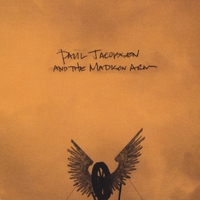Lately I’ve been thinking a lot about the role of geography and the way music can be tied to location. In a subsection of Confronting Silence: Selected Writings entitled “Sound of East, Sound of West” Toru Takemitsu felt that Japanese traditional music in particular was rooted to location and was nonportable music. By contrast, he felt that much of Western music had opposite characteristics: it is portable, and can be made almost anywhere.
His opinions about “transportable and nontransportable music” were formulated during the preparations for the premier of his piece November Steps, an orchestral piece featuring two traditional Japanese instruments, shakuhachi and biwa. When visiting New York, the soloists had difficulties combating the effect that climate changes had on their instruments, so they wrapped their instruments in lettuce leaves to try and maintain a degree of humidity for their instruments. He concluded that Japanese music lives best in the region from which it originates, and adapts poorly elsewhere.
I’ve mainly been thinking about the influence of location with music as I’ve been listening to my friend Paul Jacobsen‘s new album (check it out on iTunes here. It’s a great album). Paul and his wife moved a few years ago away from New York to go back home to Salt Lake City. Much of his album is rooted to both NYC and SLC, but to me, this is a Western album.
To get specific with the instrumentation, the use of banjo and some of the percussion choices give a folk flavor, the use of lap slide guitar hearkens both to country and to Western American music in general (think Hawaii), and the use of big-reverb electronic guitars reminds me of Southwestern styles (particularly Chris Isaak). The final song is pretty much a hymn, which points to the Mormon cultural presence in Salt Lake City. I would even go so far as to say that Paul Jacobsen and the Madison Arm have effectively created a Salt Lake City sound. It can’t be Californian, and it’s not Soutwestern, and it certainly isn’t Country music or Bluegrass or Folk. It’s somewhere in between all these things: it’s Salt Lake City music, at the ‘crossroads of the West.’
In the case of Paul’s album, I also feel Takemitsu’s perspective about Western music to be very relevant. The album is distributed and meant to be played online, on portable devices, on CD players, in cars, on the radio. Can music be transportable and not transportable simultaneously? Or does the production of the album and its distribution only add another layer of its Westernness?
